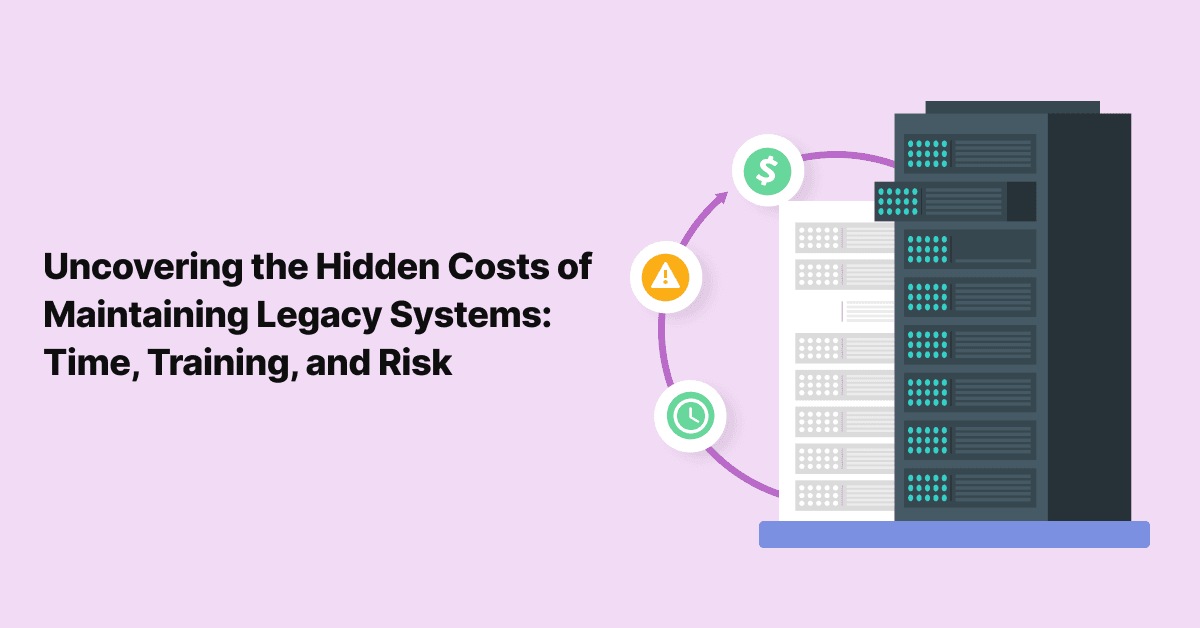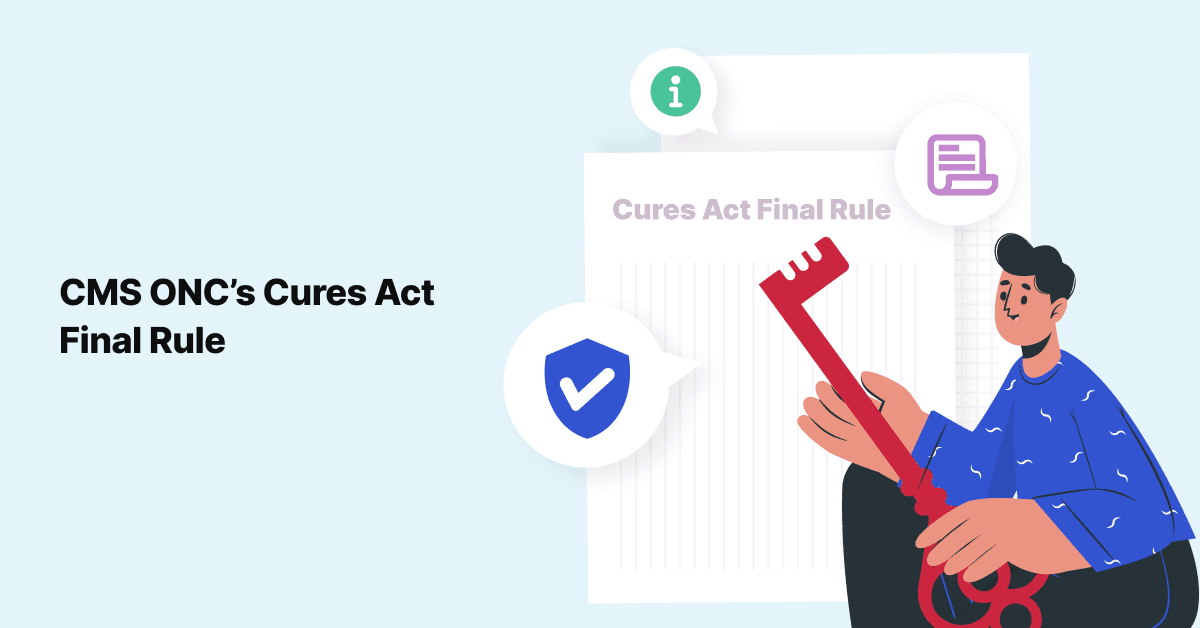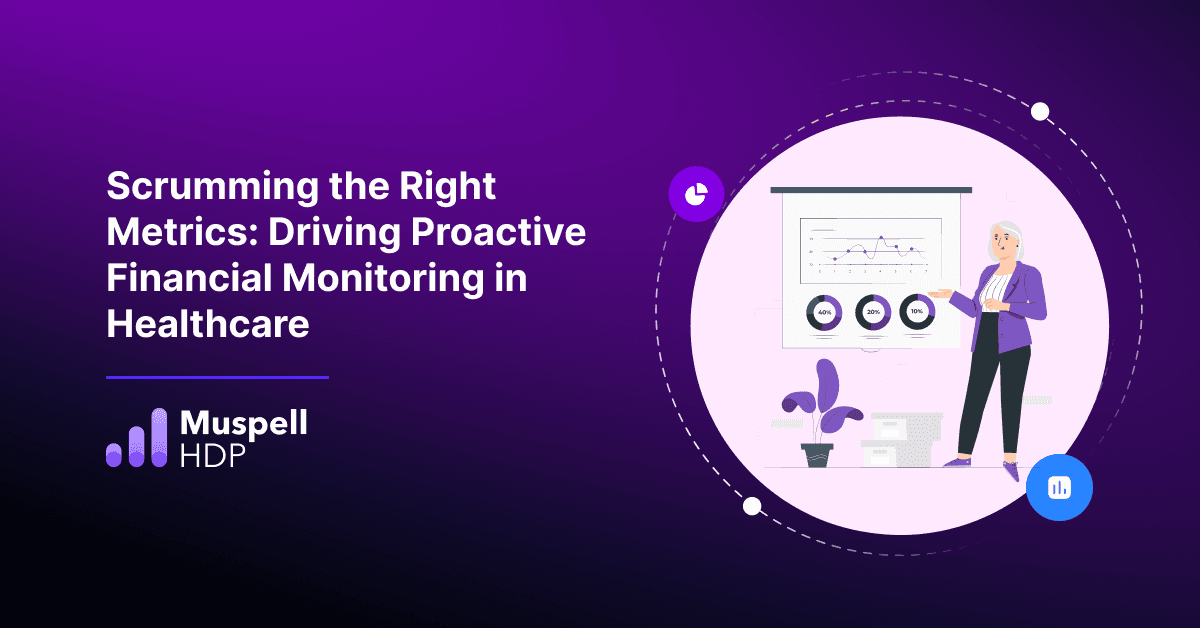
The Hidden Costs of Maintaining Legacy Systems
Operating legacy systems can be a costly endeavor. Maintaining and upkeeping legacy systems require a vast …

On March 9, 2020, ONC released its Cures Act Final Rule, and it was published in the Federal Register on May 1, 2021. The Final Rule implements key provisions outlined in the 21st Century Cures Act to advance interoperability, support seamless exchange, access, and use of Electronic Health Information (EHI), and address information blocking.
Read on to learn about:
Information blocking was generally prohibited and defined by the Cures Act by covered actors, such as - health IT developers of certified products, healthcare providers, Health Information Networks (HINs), and Health Information Exchanges (HIE). However, there are exceptions to this rule.
Exceptions that involve not fulfilling the exchange, access, or EHI use-related requests cover the following:
1. Preventing harm exception
2. Privacy exception
3. Security exception
4. Infeasibility exception
5. Health IT performance exception
6. Content and manner exception
7. Fees exception
8. Licensing exception
There are several changes that have been made to the ONC’s Health IT Certification Program by the Cures Act Final Rule. This involves adding new criteria and re-establishing the initial requirements that are needed to be met by the IT developers and their modules for getting certified. Apart from that, revisiting existing certification criteria and defining requirements that are ongoing and need to be met by the developers and their modules for maintaining certification, are also included.
The health IT developers are strictly prohibited from information blocking. In fact, if they are found to be involved in information blocking related to subjects like interoperability, usability, security, experiences, or practices related to Electronic Health Information (EHI) exports, they could face strict consequences such as getting removed from the program.
Real World Testing is another important aspect to be noted. This requires the health IT developers to test the real-world technology used successfully for interoperability purposes in the setting type, where such technology would get the chance of getting marketed.
1. Single Patient EHI Export ((170.315(b)(10)(i)): The functionality of single patient EHI export involves the use capability of executing a single patient report. It must be limited to at least one of the following ways:
2. Patient Population EHI Export ((170.315(b)(10)(ii)): The functionality of patient population EHI export supports the transition of patient data in instances of the providers of healthcare, switching the systems of health IT.
3. Standard / Format: The criterion of certification does not require any specific standard of format to be used. Both the patient population EHI export functionalities files and the single patient export files must be in a computable and electronic format. It must also include the up-to-date hyperlink of the export format, which is publicly accessible and would allow any person to access the information directly without any additional preconditions.
4. Stored Data: This applies to all the EHI and is agnostic whether the EHI is stored by or in the certified health IT module, or whether they are by any other “non-certified” health IT product capabilities. This includes the certified health IT module as a part of it.
5. Image Data: For conformance, any imaging formation, images, and elements of the image which fall under the EHI scope for this criterion of certification would be required to be exported unless images or imaging data links (and not just the image themselves, which might remain in a PACS) are the only EHI which are stored by or in the product to which this criterion of certification applies. In this case, only the links would be required to be part of the export.
6. Timeframe: Neither of the export types would require the health IT module to support a user-defined or specific timeframe range or time limit for demonstrating conformance.
7. “Direct-to-patient” Functionality: This is a criterion of certification which do not require the “direct-to-patient” functionality for demonstrating conformance.
8. Data Retention: The developers of health IT retain much of the EHI records for demonstrating compliance for ten years as per the Cures Act section 4002.
The new EHI export criterion 170.315(b)(10) was finalized by the ONC, which required a certified module of health IT to export all of the EHI electronically, as defined in § 171.102, that could be stored at the time of the product certification, which includes the health IT module as a part of it.
New application program interfaces were established by the ONC Cures Act Final Rule for the health IT developers. Starting from May 1, 2022, the new criterion of API certification, § 170.315(g)(10), would replace the “application access—data category request” certification criterion (§ 170.315(g)(8)). This new criterion would require standardized access to API for a single patient and population service and is limited to the ‘read-only’ services, which are API-enabled, using the HL7 or Health Level 7 Fast Healthcare Interoperability Resources (FHIR®) standard.
The following requirements have been outlined by the ONC for certified health IT developers and their certified API technologies for the meeting:
Real World Testing plans are intended to describe approaches of measurement for the year immediately following the submission of the plan. The plan should be able to address any health IT modules that are certified before or by August 31 of the year in which the plan is submitted. This process requires an ongoing, yearly basis for all modules of health IT that are certified to applicable criteria of certification.
The timeline for the Real World Testing plan is as follows:
Until October 5, 2022, EHI is limited to the subset of data elements that are represented in the US core data for Interoperability (USCDI) v.1. This includes the right types of clinical notes that must be shared if requested. After October 5, 2022, actors must make sure that all the requested EHI have been made available. This involves not only the represented EHI subset but also the data elements that have been identified in the USCDI v.1.
The data elements that are represented in the USCDI v.1 are as follows:
The above provision is meant to ease the actors into these new requirements and does not require the data elements to be recorded using any specific content or vocabulary standards. The actor has to simply make the data elements that are listed in the USCDI v. 1 available at the request of the patient, only if the actor has that specific EHI in the designated set of records. It must be kept in mind that limiting the information blocking definition to the data elements represented in the USCDI v.1 is the minimum requirement at the moment. However, the ONC has strongly encouraged the regulatory community to make all the EHI available.
Join over 3,200 subscribers and keep up-to-date with the latest innovations & best practices in Healthcare IT.

Operating legacy systems can be a costly endeavor. Maintaining and upkeeping legacy systems require a vast …

It is no small effort for healthcare systems to implement a Health Information Exchange (HIE). Whether the …

Here is a good idea. Analytics for Healthcare financial management to be built on the foundation of claims …